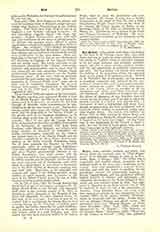

Boy-Bishop.—The custom of electing a boy-bishop on the feast of St. Nicholas dates from very early times, and was in vogue in most Catholic countries, but chiefly in England, where it prevailed certainly in all the larger monastic and scholastic establishments, and also in many country parishes besides, with the full approbation of authority, ecclesiastical and civil. The boy-bishop was chosen from among the children of the monastery school, the cathedral choir, or the pupils of the grammar-school. Elected on St. Nicholas’s day (December 6), he was dressed in pontifical vestments and, followed by his companions in priest’s robes, went in procession round the parish, blessing the people. He then took possession of the church, where he presided at all the ceremonies and offices until Holy Innocents‘ day (December 28). At Salisbury he is said to have had the power of disposing of any benefices that fell vacant during his reign, and if he died in office the funeral honors of a bishop were granted him. A monument to such a boy-prelate still exists there, though its genuineness has been questioned, and at Lulworth Castle another is preserved, which came from Bindon Abbey. The custom was abolished by Henry VIII in 1542, restored by Queen Mary, and again abolished by Elizabeth, though here and there it lingered on for some time longer. On the Continent it was suppressed by the Council of Basle in 1431, but was revived in some places from time to time, even as late as the eighteenth century.
G. CYPRIAN ALSTON

